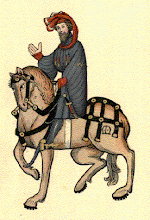Recently Pete brought "Living HEMA" (http://www.livinghema.se/index.html) to my attention. For those of you who don't read Swedish here is the translation of one of their pages:
"What is HEMA
HEMA is an abbreviation of the Historical European Martial Arts, in Swedish historical European martial arts.
This is a collective name for the old traditions of often extinct or nearly extinct martial arts that are recorded and documented from historical times. During the late 1800s and early 1900s brought a renewed interest in these forms of struggle, and then again in large forgotten. Over the past 10-15 years has once again created interest and pursue the study of historical martial arts.
Some of the most common areas of interest today revolves around the medieval martial arts, as practiced, say, Germany and Italy, but the concept of historical European martial art involving a much larger collection of martial arts. The term comes from English Historical European Martial Arts (HEMA, an acronym which is also used in Swedish) and encloses often forms of struggle are still alive, but on a reduced scale, for example, bare Knuckle boxing, Canne de combat, or the like.
Many of the older manuscripts contain detailed descriptions of both individual techniques and the whole system." (many thanks to Google Translate for this. http://translate.google.com/#sv|en|).
Now, I am honestly a bit divided on this. On the one hand I am encouraged to see quality living history interpreters adding HEMA to their displays and yet on the other hand I wonder if the historical clothing truly adds or detracts from the public's view of HEMA. In the end I think that I would rather see a proper display of HEMA (with true martial intent) by reenactors in costume than the "fives" anyday.
Subscribe to:
Post Comments (Atom)

No comments:
Post a Comment